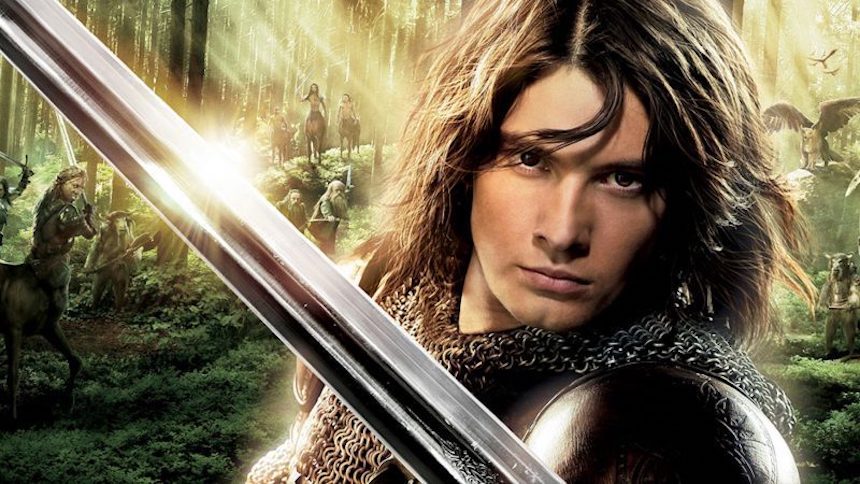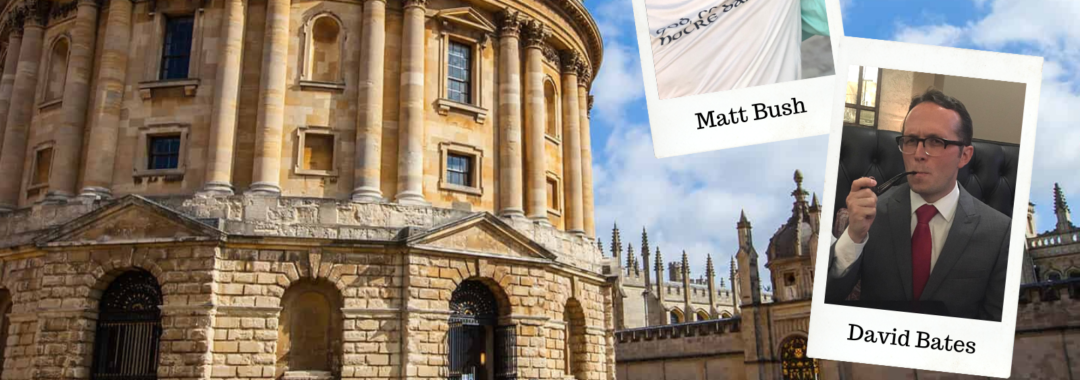
Each Season we discuss briefly one of the Chronicles of Narnia. In Season 1 we read The Lion, the Witch and the Wardrobe. This Season, we’re reading Prince Caspian, as it was the second book to be published. In comparison to the previous book, Prince Caspian is less familiar to most people so we had to spend more time outlining the plot, so Matt and I ended up having to break up our discussion over two episodes.
S2:E26: Prince Caspian (Download)
If you enjoy this episode, you can subscribe manually, or any place where good podcasts can be found (iTunes, Google Play, Podbean, Stitcher, TuneIn and Overcast).
Time Stamps
In case you would like to jump to specific parts of the episode, click on the links below:
01:54 – Quote-of-the-week
03:16 – Drink-of-the-week
06:00 – Thematic overview
09:36 – Recap of previous book
10:09 – Begin discussion of Prince Caspian
Show Notes
• I mentioned that a listener, Patience, had said that Matt’s C.S. Lewis credentials should be suspended since he hadn’t read The Chronicles of Narnia. This is the main reason we read one each Season. The Lamp-post Listener podcast discusses those books chapter-by-chapter, but we just give an overview at the end of each season.
• Congratulations to Rilian from Narnia Web, on the upcoming birth of his second child!
• The quote-of-the-week came from the end of the book when Aslan is speaking to Caspian:
“Welcome, Prince,’ said Aslan. ‘Do you feel yourself sufficient to take up the Kingship of Narnia?’ ‘I – I don’t think I do, Sir,’ said Caspian. ‘I am only a kid.’ Good,’ said Aslan. ‘If you had felt yourself sufficient, it would have been proof that you were not.”
C.S. Lewis, Prince Caspian
We compared this with Frodo from The Lord of the Rings, which Matt is currently reading!
• I was drinking more Vat 69 as my drink-of-the-week. Matt was drinking water because New York was in the middle of a heat wave. I’ll be brining a bottle of the Vat 69 to the C.S. Lewis Symposium at the end of the year.
• This book was published in 1951, a year after the previous book. It was dedicated to the daughter of Lewis’ doctor. It is also often regarded as the least popular book in the series. Matt said he wasn’t initially enamoured with it, but spending more time studying the book really helped his enjoyment.
• I began the episode by quoting Lewis’ own thoughts on the series:
“The whole Narnian story is about Christ. That is to say, I asked myself ‘Supposing that there really was a world like Narnia and supposing it had (like our world) gone wrong and supposing Christ wanted to go into that world and save it (as He did ours), what might have happened?’ The stories are my answers. Since Narnia is a world of Talking Beasts, I thought He would become a Talking Beast there, as He became a man here. I pictured Him becoming a lion there because
C.S. Lewis
(a) the lion is supposed to be the king of beasts;
(b) Christ is called ‘The Lion of Judah’ in the Bible;
(c) I’d been having strange dreams about lions when I began writing the work.
The whole series works out like this…. The Lion, the Witch and the Wardrobe, the Crucifixion and Resurrection. Prince Caspian restoration of the true religion after corruption…”
• I also referred to Planet Narnia by Michael Ward, as a lens through which to view the series. I hope to have Dr. Ward on the show at some point in the future to talk more thoroughly about it. However, in summary, Dr. Ward’s hypothesis is that Lewis modelled the series after the medieval cosmos and the “seven heavens”. For example, Prince Caspian is modelled on Mars, which means that this affects the themes and lexicon of the book. Since Mars was the god of war and of trees, we can expect to see a lot of martial imagery and the constant presence of trees in the narrative.
• After giving a recap of the previous book, we started discussing Prince Caspian. We talked about how much more we liked Edmund in this book, as well as how annoying Susan is!
• We talked about how the children work out that they’re back in Narnia, but many years since they left.
• Using theosis as our backdrop, we spoke about how Narnia changes the children, making them more like the older versions of themselves.
• Throughout the book, Trumpkin has many alliterated exclamations: “Wraith and wreckage, beards and bedsteads, horns and halibuts, bulbs and bolsters, whistles and whirligigs, soup and celery, thimbles and thunderstorms, lobsters and lollipops, giants and junipers, tubs and tortoiseshells, bottles and battledores, bilge and beanstalks, cobbles and kettledrums, weights and water-bottles, crows and crockery”. I asked Matt which was his favourite.
• We spoke about the breaking up of the story into flashbacks, which is often one of the things which people don’t like in this book. Matt wasn’t keen on it. He also admitted that he wasn’t getting immersed in The Lord of the Rings – please pray for him!
• We discussed the “secularism”, so-to-speak of Miraz. We compared his dismissal of “Old Narnia” to dismissals of theism. Matt told us about his date with an atheist.
• I commented that Miraz’s castle is quite possibly built on the ruins of the White Witch’s House. This could be seen as a warning that evil has a habit of returning, even after it has been beaten once…
• Caspian’s nurse is dismissed and replaced with Dr. Cornelius. Matt compared it to the following Bible passage:
“Ask and it will be given to you; seek and you will find; knock and the door will be opened to you…”
Matthew 7:7
• Dr. Cornelius tells Caspian how he has kept hope:
“Sometimes at night, in the woods, I thought I had caught a glimpse of Fauns and Satyrs dancing a long way off; but when I came to the place, there was never anything there. I have often despaired; but something always happens to start me hoping again”
C.S. Lewis, Prince Caspian
We also referred the Lembas bread from The Lord of the Rings.
• I compared Miraz’s to King Claudius from Hamlet, Richard III, Oliver Cromwell and Denethor.
• We discussed the characters of Trufflehunter, Nickabrick and Trumpkin.
“I’ll be in anyone or anything,” said Nikabrik, “that’ll batter these cursed Telmarine barbarians to pieces or drive them out of Narnia. Anyone or anything, Aslan or the White Witch, do you understand?”
C.S. Lewis, Prince Caspian
• I compared Caspian to King Arthur and the rebellion to the Jacobite uprisings after William of Orange seized power from James II in 1688.
• In reference to the Ogre and Hag, I said that Caspian discovered that, not only are there angels, there are also demons.
• Matt and I both expressed our deep love for Reepicheep.
• We saw the symbolism in setting up at camp at Aslan’s How, the site of his sacrifice. In restoring the true religion, we have to begin with the cross. We compared it to the Mass’ representation of Calvary. I also compared the How to the catacombs of Rome.
